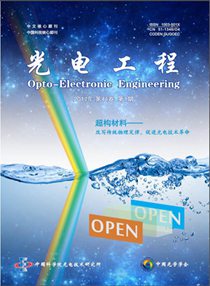2017 Vol. 44, No. 1
Special Issue: Metamaterial
Metamaterials are artificial new structural materials, featuring extraordinary physical (electromagnetism, acoustics, etc.) characteristics compared with natural materials. In its English name—metamaterials, the prefix meta- is from Greek, which means surpassing.
The basic idea of metamaterials is to control equivalent parameters of materials by taking advantage of the resonance of the unit cells. The development of optical metamaterials is attributable to English physicist John Pendry, who porposed electro response and magnetic response structures in 1996 and 1999, respectively. Since 2000, the development of metamaterial has brought new opportunities for the development of basic optical field, attracting hundreds of thousands researchers to conduct relevant researches. The advantages of metamaterials are in three aspects: Firstly, the equivalent refractive index of metamaterials can be negative, providing support for super-resolution imaging; Secondly, the refractive index can be spatially adjustable and electromagnetic components (such as invisible cloak) can be developed when transform optics is also used; Last but not the least, as a new paradigm for material design, metamaterials show a brand new development directions for materials in fields of acoustics, thermology and mechanics. Relative Research of metamaterials were rated as annual major scientific progresses by Science in 2000 and 2003. In 2010, Science rated metamaterials as one of the ten scientific breakthroughs in the previous ten years. ASD (R&E) of U.S Department of Defense also lists metamaterial as one of the “six disruptive basic research areas”.
Currently, theoretical researches related to metamaterials have been proven by tests, and the research has entered into a new phase. However, it takes time to test things. A new material has to undergone long-term tests before it shows its real value. It is seven years from 2010 to now. Many scholars begin to think whether the expectations of metamaterials can be realized and revolutionarily innovate conventional technologies in certain aspects. So far, there is no accurate answer to this question. The subject selection of metamaterials for this issue of Optoelectronic Engineering is to provide scholars with a high level and open platform for idea exchange and inspiration.

-
{{article.year}}, {{article.volume}}({{article.issue}}): {{article.fpage | processPage:article.lpage:6}}. doi: {{article.doi}}{{article.articleStateNameEn}}, Published online {{article.preferredDate | date:'dd MMMM yyyy'}}, doi: {{article.doi}}{{article.articleStateNameEn}}, Accepted Date {{article.acceptedDate | date:'dd MMMM yyyy'}}
-
{{article.year}}, {{article.volume}}({{article.issue}}): {{article.fpage | processPage:article.lpage:6}}. doi: {{article.doi}}{{article.articleStateNameEn}}, Published online {{article.preferredDate | date:'dd MMMM yyyy'}}, doi: {{article.doi}}{{article.articleStateNameEn}}, Accepted Date {{article.acceptedDate | date:'dd MMMM yyyy'}}

 E-mail Alert
E-mail Alert RSS
RSS


